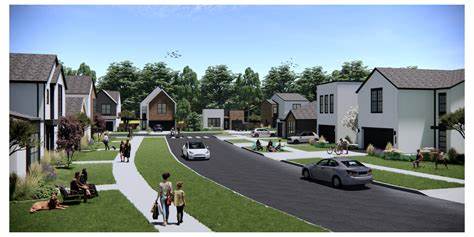
As operating expenses outpace rental income and competition intensifies in the Build-to-Rent (BTR) sector, Dynamic Modular Solutions (DMS) recognizes a growing opportunity to introduce smarter, faster, and more cost-effective housing solutions. The recent John Burns Research and Consulting survey highlights pressing trends within the BTR industry—including rising costs, flat rent growth, and increasing tenant incentives—that underscore the need for more efficient development methods.
Modular construction, by contrast, offers a compelling alternative to traditional site-built models. With controlled factory environments, accelerated build times, reduced labor costs, and enhanced quality control, DMS is uniquely positioned to address the BTR market’s evolving demands. Our modular approach enables developers and operators to improve margins, scale communities faster, and maintain design flexibility across various housing types—from horizontal apartments to townhomes.
Key Takeaways from the 1Q25 Burns BTR Survey (with Modular Context):
Operating Expenses Outpacing Rent Growth
-
- +3.2% YOY growth in operating costs vs. +1.3% YOY rent growth is shrinking NOI.
-
- Modular Advantage: Lower operational costs and shorter timelines can stabilize returns faster.
Midwest Leads in Rent Growth, Southwest Faces Oversupply
-
- Midwest BTR rent rose +4.2% YOY; Southwest fell -2.9% YOY due to inventory saturation.
-
- Modular Advantage: Regionally targeted modular deployment enables smart supply control.
Concessions on the Rise
-
- New renters get 4–6 weeks of free rent, especially in Texas and Florida.
-
- Modular Advantage: Faster occupancy and staged development can reduce upfront lease incentives.
Diverse Product Types Perform Differently
-
- Horizontal apartments (cottages) dropped -4.2% YOY, especially in oversupplied Phoenix.
-
- Modular Advantage: Our flexible product configurations support diverse designs, including townhomes, rowhouses, and mixed-use.
Leasing Competition and Tenant Retention
-
- 50% of operators face more lease renewal negotiation.
-
- Modular Advantage: Higher-quality, energy-efficient modular builds can enhance resident satisfaction and long-term retention.
Occupancy Holding Strong Despite Market Pressure
-
- Stabilized communities average 93% occupancy, though lower in overbuilt areas.
-
- Modular Advantage: Phased modular deployments can help prevent overbuilding and optimize absorption rates.
Strategic Next Steps for BTR Developers with DMS:
Reevaluate BTR Cost Structures
-
- Modular can reduce hard costs, streamline build schedules, and help recover margin in markets where NOI is under pressure.
Target Underserved Regions with Modular Deployments
-
- Focus on areas like the Midwest where demand remains strong and construction efficiency gives you a competitive edge.
Optimize Product Mix
-
- Modular flexibility allows you to pilot and shift between detached homes, townhomes, or hybrid models based on market need.
Reduce Risk with Staged Development
-
- Avoid oversupply through scalable modular phases that align with actual leasing velocity and market demand.
Rebrand with Quality and Speed
-
- Today’s renters expect speed, design, and comfort—DMS delivers all three while future-proofing communities for long-term success.
At Dynamic Modular Solutions, we believe that the challenges revealed in the BTR market are not setbacks—they’re signals. Signals for smarter strategies, better building methods, and more thoughtful execution. Modular isn’t just an option—it’s the next evolution in rental housing.
Let’s talk about how we can help future-proof your BTR portfolio with modular precision.
